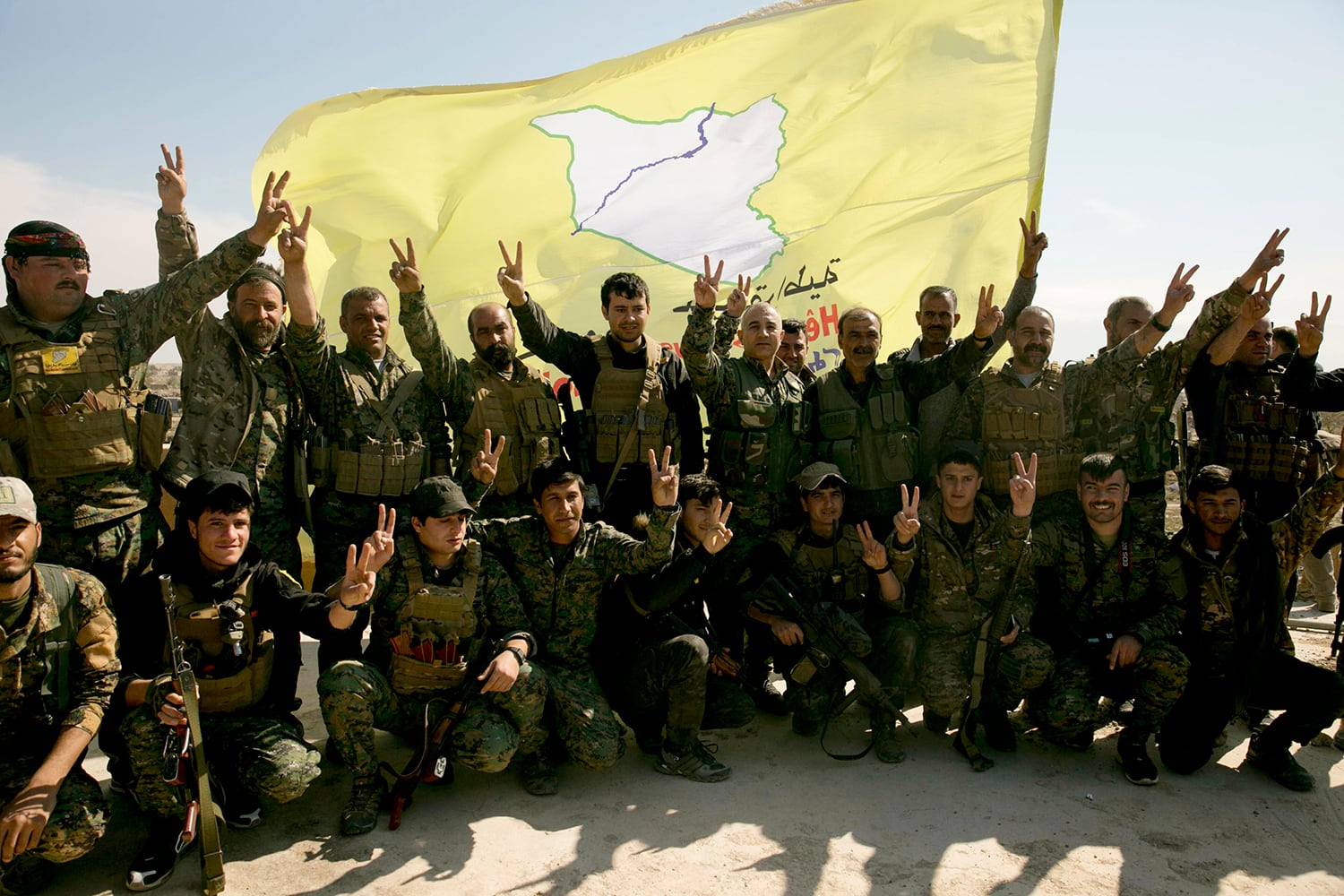Coalition airstrikes against the Islamic State dropped off considerably in February, as the campaign to oust the militant group from its last strongholds in Syria reached its final stages.
Airstrikes as part of Operation Inherent Resolve had dropped off in early 2018, hitting a low for the year in July, when 241 weapons were released, according to statistics posted online by U.S. Air Forces Central Command on Wednesday.
But the number of weapons released steadily increased through late summer, and then spiked in November, when 1,424 airstrikes were carried out. Airstrikes then hit the year’s peak in December when 2,214 weapons were released, and ticked down slightly to 2,005 in January.
Last month, however, the number of weapons released dropped to 607. That’s the lowest amount since August 2018. AFCENT said in a release that those February airstrikes, in support of allied forces on the ground, helped reduce ISIS territory to less than half a square kilometer.
A few weeks later, on March 23, U.S.-backed forces rooted out ISIS forces from their last piece of territory, and declared they had defeated the militant group after a devastating, nearly five-year war.
ISIS at one point controlled 20,000 square miles of territory, AFCENT said.
“The air component is fully committed to winning the current fight while maintaining a credible, capable and dynamic defense posture to deter and win against state and non-state actors,” Lt. Gen. Joseph Guastella, commander of AFCENT and the Combined Forces Air Component for U.S. Central Command, said in the Wednesday release. “We best achieve today’s war-winning airpower by operating, practicing and improving alongside our joint coalition partners.”
RELATED

But despite the declared victory, fighters with the allied Syrian Democratic Forces have continued to clash with holdout remnants of ISIS in recent days.
American and coalition pilots flew 1,222 strike sorties and 919 intelligence, surveillance and reconnaissance sorties in February to support anti-ISIS operations in February.
“Weapon employment decreased from levels in January as ground forces advanced methodically to liberate the last of ISIS-held land in Syria and defeat the remnants of the so-called caliphate,” the AFCENT release said.
Airstrikes in Afghanistan dropped to 327 in February, which was the lowest level in nearly two years, according to the airpower summary.
And with the March 11 return of B-1B Lancer bombers and about 350 airmen from their deployment to Al Udeid Air Base in Qatar, the Air Force currently has no bomber presence in the Middle East, Air Force Magazine reported. The 7th Bomb Wing at Dyess Air Force Base, the home of those B-1s, said the airmen supported operations against ISIS and in Afghanistan during their six-month deployment, flying 390 sorties and carrying out 920 airstrikes that destroyed more than 1,760 targets.
Stephen Losey is the air warfare reporter for Defense News. He previously covered leadership and personnel issues at Air Force Times, and the Pentagon, special operations and air warfare at Military.com. He has traveled to the Middle East to cover U.S. Air Force operations.





